INTRODUCTION
 From its discovery in Ethiopia, coffee has well and truly conquered the planet. Worldwide we drink around two billion cups a day, and for centuries it has shaped the way we live, driven national economies, kept us awake and some say even instigated artistic movements and helped win wars. And yet, ask any barista or coffee professional working today and they will tell you that in terms of flavour, we are living in a golden age of coffee. Farming practices have improved, coffee roasters have never before been so knowledgeable, and on high streets from Cape Town to Tokyo a new breed of coffee shop has arrived, serving only the best speciality coffee prepared with care. In the USA this revolution in producing high-quality coffee has been described as the third wave. Elsewhere it is known as the speciality coffee movement. Whatever you call it, most coffee experts agree: the best is yet to come.
From its discovery in Ethiopia, coffee has well and truly conquered the planet. Worldwide we drink around two billion cups a day, and for centuries it has shaped the way we live, driven national economies, kept us awake and some say even instigated artistic movements and helped win wars. And yet, ask any barista or coffee professional working today and they will tell you that in terms of flavour, we are living in a golden age of coffee. Farming practices have improved, coffee roasters have never before been so knowledgeable, and on high streets from Cape Town to Tokyo a new breed of coffee shop has arrived, serving only the best speciality coffee prepared with care. In the USA this revolution in producing high-quality coffee has been described as the third wave. Elsewhere it is known as the speciality coffee movement. Whatever you call it, most coffee experts agree: the best is yet to come.
WHAT IS SPECIALITY COFFEE?
The coffee shops and roasteries in this book are largely purveyors of speciality coffee. But what does this mean? According to the Specialty Coffee Association of America (SCAA), speciality coffee is that which scores 80 points or above out of a possible 100 when graded by a qualified coffee taster. Coffee that scores between 60 and 80 points is graded as commodity coffee certainly still drinkable, but destined for the supermarket shelf or jars of instant. At these tasting sessions a rigorous process known in the business as a cupping points are awarded for categories such as sweetness, flavour, balance and mouthfeel. To achieve such a high score, speciality coffee is generally grown in optimal soil, climate and altitude conditions, is harvested and processed at the right time and is roasted to perfection. In short, were talking about very fine coffee the cream of the crop.
Interest in speciality coffee has recently undergone a rapid expansion. The SCAA reports that in 1993 there were just 2850 speciality coffee shops in the whole of the USA. By 2013 the number was hovering around 30,000. As consumers become more demanding and palates more sophisticated, coffee producers, roasters and baristas are upping the ante with speciality coffee, and taking the so-called third wave to a possible fourth.
WHAT IS THIRD WAVE COFFEE?
Love it or hate it, the term third wave is useful in understanding where we are in the history of coffee making and appreciation. But what about the first and second waves? In countries such as the USA, the UK, New Zealand and Australia, the first wave of coffee usually describes the era when coffee became widely available to consumers as instant coffee, the second wave was when espresso drinks arrived on the high street (helped along by chains such as Starbucks) and better coffee became desirable. The third wave was coined in the USA in the late 1990s and describes a focus on coffee as a complex and artisanal food product, like wine.
Third wave coffee makers are innovators who are interested in how the whole journey from seed to cup affects the final outcome. They want to tweak and improve those steps to achieve better coffee. They value more than ever the relationship between the coffee farmer and the coffee roaster, and typically want to maintain the distinct flavours of the coffees origin and variety, something they achieve with light roasting techniques. The role of the barista is also a key component. Precise control over coffees preparation the grinding, brew ratio, heating of milk or latte art, for example is something to be honed and celebrated.
While most of the cafes and roasteries in this book will serve speciality coffee, they are not all third wave in style. In Italy, excellent dark-roasted shots of coffee have been served since the invention of the espresso machine in the late 19th century, while in Istanbul you can sip a drink which dates from the age of Suleyman the Magnificent: the wonderfully sweet and sludgy Turkish coffee. Third wave coffee pioneers are hardly responsible for all the great coffee in the world, but what they have introduced is a widespread sharing of knowledge about coffee. Through tasting notes, cupping sessions, barista classes, talks, festivals and sheer infectious passion, they have given us a language and understanding for what makes great coffee.
WHY GO COFFEE TOURING?
This book includes a huge range of coffee experiences, from the traditional coffee ceremonies of Ethiopia and kissatens of Japan, to vanguard studios that have more in common with a chemists laboratory than a cafe. Weve included both independents and coffee pioneers that have grown into corporate chains. What matters to us is the quality of the coffee and the visitor experience. In every place included you should learn something about coffee.
And why go coffee touring in the first place when great coffee is so widely available? There are a few reasons. The first is simple: time is the enemy of coffee; it tastes best when it has been freshly roasted and ground. You can buy speciality coffee online easily enough, but you are never going to get the same result as having it prepared for you by expert hands close to where it was roasted.
The second is that the story of coffee is intertwined with the history, economy and culture of so many different countries, that to understand it fully requires a coffee tour whether thats to sip a flat white in Wellington or a bicerin in Turin. Excitingly, more coffee-producing countries are now enjoying the fruits of their best plants, meaning you can drink speciality coffee close to the field where it was grown.
Lastly, the world of coffee is filled with passionate people eager to share their obsession with you. To learn the most about coffee, youre just going to have to go and meet them.
And if you think you know a lot about coffee, we challenge you to tour one of the more unusual destinations in this book. Venture to Norway, Sweden or Hungary and youll find exquisite coffee being prepared to the highest standards. Take a trip to Nicaragua or Colombia and youll discover plantation owners keen to show you the possibilities of coffee grown in their countries. Elsewhere we reveal exciting cafes in Iceland, Cuba, Vietnam and Japan.
HOW TO USE THIS BOOK
For each of the 37 countries in this book weve included a profile of what you can expect from the coffee scene in that country. We have then organised the best coffee shops and roasteries to visit by city, or, in the case of the plantations, by region. In each entry weve suggested the coffee you should taste or buy while there, and have also recommended local sights and things to do so coffee tourers can make a day (or weekend) of their visit. There is a world of great coffee to try, now go and enjoy it! Dora Ball.
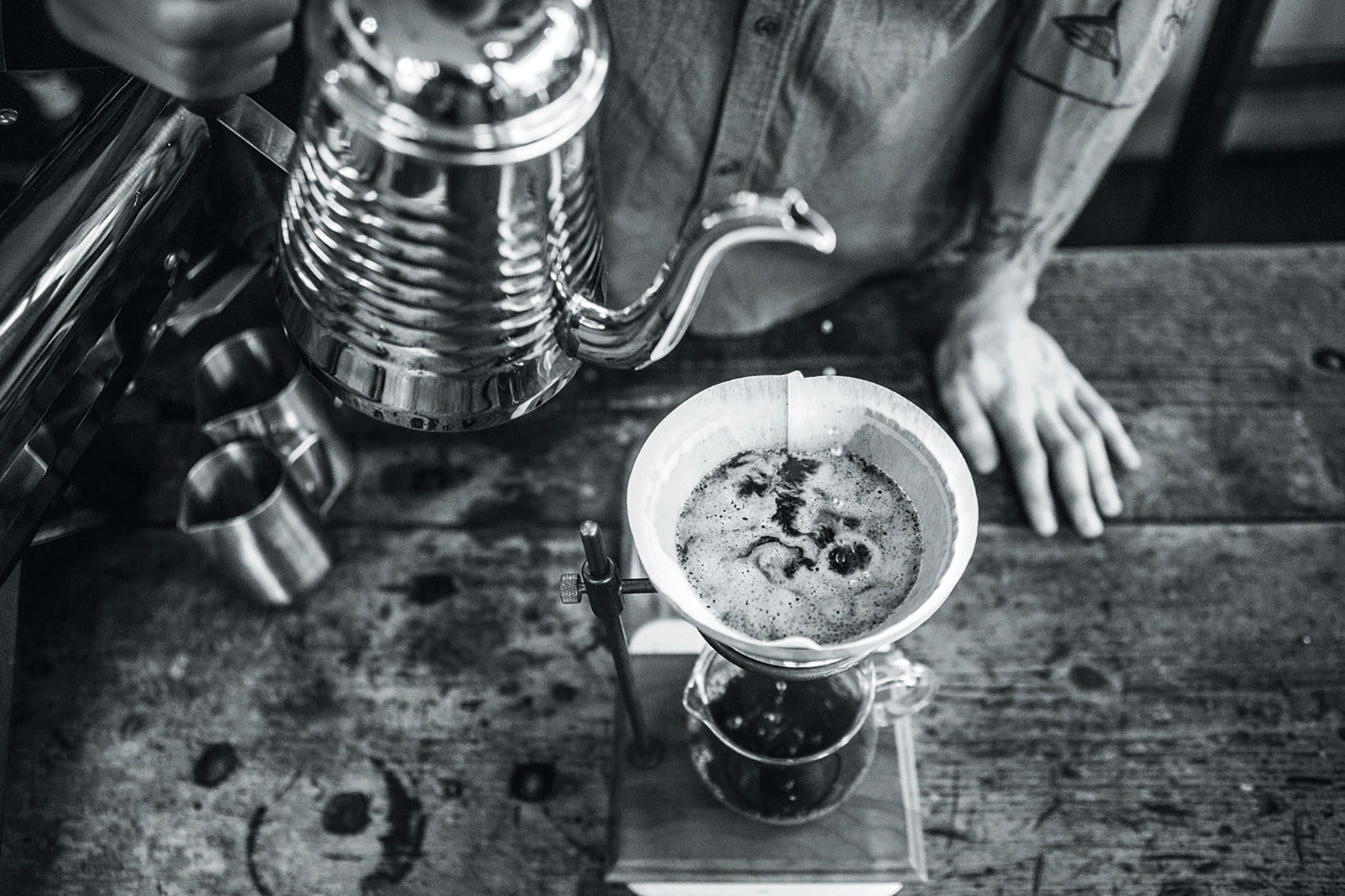
WWW.NANDAHAGENAARS.NL

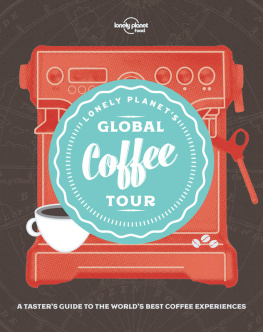

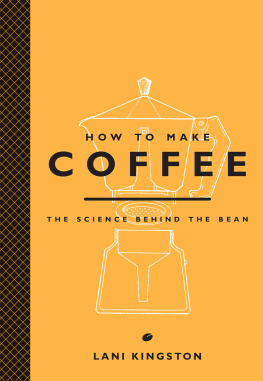



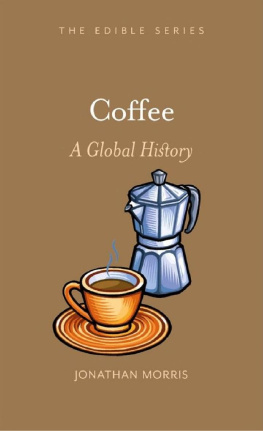
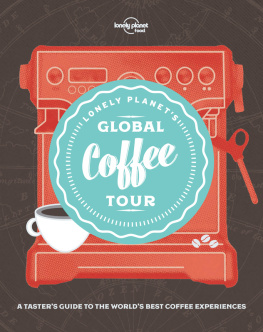

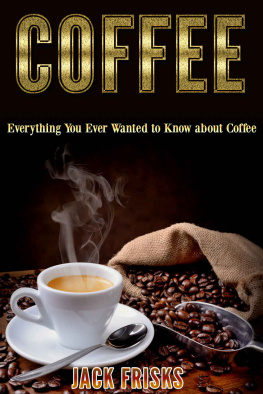
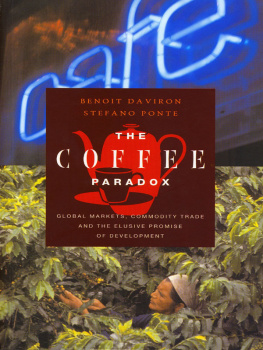
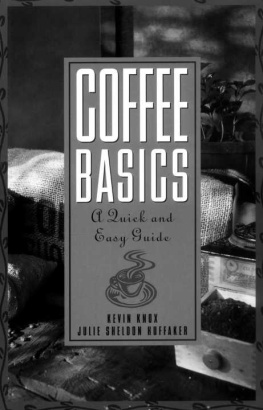



 From its discovery in Ethiopia, coffee has well and truly conquered the planet. Worldwide we drink around two billion cups a day, and for centuries it has shaped the way we live, driven national economies, kept us awake and some say even instigated artistic movements and helped win wars. And yet, ask any barista or coffee professional working today and they will tell you that in terms of flavour, we are living in a golden age of coffee. Farming practices have improved, coffee roasters have never before been so knowledgeable, and on high streets from Cape Town to Tokyo a new breed of coffee shop has arrived, serving only the best speciality coffee prepared with care. In the USA this revolution in producing high-quality coffee has been described as the third wave. Elsewhere it is known as the speciality coffee movement. Whatever you call it, most coffee experts agree: the best is yet to come.
From its discovery in Ethiopia, coffee has well and truly conquered the planet. Worldwide we drink around two billion cups a day, and for centuries it has shaped the way we live, driven national economies, kept us awake and some say even instigated artistic movements and helped win wars. And yet, ask any barista or coffee professional working today and they will tell you that in terms of flavour, we are living in a golden age of coffee. Farming practices have improved, coffee roasters have never before been so knowledgeable, and on high streets from Cape Town to Tokyo a new breed of coffee shop has arrived, serving only the best speciality coffee prepared with care. In the USA this revolution in producing high-quality coffee has been described as the third wave. Elsewhere it is known as the speciality coffee movement. Whatever you call it, most coffee experts agree: the best is yet to come.